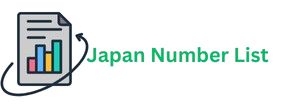What is In addition to reducing costs , PPC has a direct impact on operational efficiency. Companies that apply this system in a structured manner can increase their productivity without having to invest in more equipment or employees , simply by intelligently reorganizing their processes. This means less downtime , better use of inputs and greater control over each stage of production.
In an increasingly competitive market, investing in Production Planning and Control is no longer an option, but rather a strategic necessity for any industry seeking to stand out. In the following topics, we will understand how this system works, its main tools and how it can help cut costs and increase company profits.
Production Planning and Control (PPC) is an essential system for industry
Responsible for organizing and managing this means that when selling all stages of the production process. Its main objective is to ensure What is that resources are used as efficiently as possible, avoiding waste, reducing costs and maximizing productivity.
With a good PPC system, companies can strategically schedule production, predicting demand, controlling stocks and optimizing the use of labor and machinery. This allows the industry to meet orders on time, maintaining product quality and avoiding bottlenecks in the production line.
Main Functions of the PCP in Industry
Production Planning and Control operates on several What is fronts within the industry. Among the most important functions, the following stand out:
- Production Planning: Defines what but we believe every site should offer a will be produced, in what quantities and within what deadlines, considering market demand and factory capacity.
- Inventory Management: Ensures that there is enough raw material to meet production without excess, avoiding waste and high storage costs.
- Operations Sequencing: Organizes the manufacturing order of products, avoiding unnecessary downtime and improving machine utilization.
By integrating these functions, the PPC allows the industry to have more predictable, organized and profitable production , avoiding problems such as lack of inputs, waste of materials and low productivity.
Manual PCP vs. Automated PCP: What’s the Difference?
PPC can be applied in two ways: manually or automatically . Although the concept is the same, the way it is executed directly impacts the efficiency of production processes.
- PCP Manual:
- Uses spreadsheets and physical cell phone data records to plan and track production.
- It depends on manual analysis and updating of data, which can lead to errors and delays.
- It takes more time to gather information and make decisions.
- Difficulty integrating with other areas of the company.
- Automated PCP:
- Uses specialized software to plan, control and monitor production.
- Updates data in real time, allowing faster and more accurate decision making .
- Reduces human errors and improves operational efficiency.
- It facilitates integration between sectors such as production, inventory and purchasing.
With the advancement of technology, most industries have migrated to automated PPC systems , as they provide greater control, agility and safety in production management. Companies that adopt these solutions are able to reduce costs, minimize waste and increase productivity significantly.
In the next topics, we will see how PPC can directly impact cost reduction and which tools are most effective for optimizing industrial production.
Main Industrial Costs and How PPC Can Reduce Them
The industry constantly faces financial challenges that can compromise the profitability of the business. The main operational costs include raw materials, labor, equipment maintenance and logistics . Without efficient planning, these factors can generate waste, delays and unnecessary expenses.
Production Planning and Control (PPC) is an essential tool for optimizing the management of these costs, ensuring that each resource is used in the best possible way. By implementing a well-structured system, companies can reduce waste, improve production efficiency and increase their competitiveness in the market.
Raw Material Costs
Raw materials represent a significant part of industry costs, and any waste can directly impact the company’s profitability. A well-implemented PPC helps to control this factor strategically.
How efficient planning reduces waste and avoids excess inventory
- PCP uses historical data and demand forecasts to calculate the exact amount of raw material needed for production.
- With proper planning, the company avoids excess purchases , which can lead to the expiration of supplies, waste or unnecessary occupation of space in the inventory.
- Production is adjusted according to real demand , reducing losses and optimizing the use of materials.
